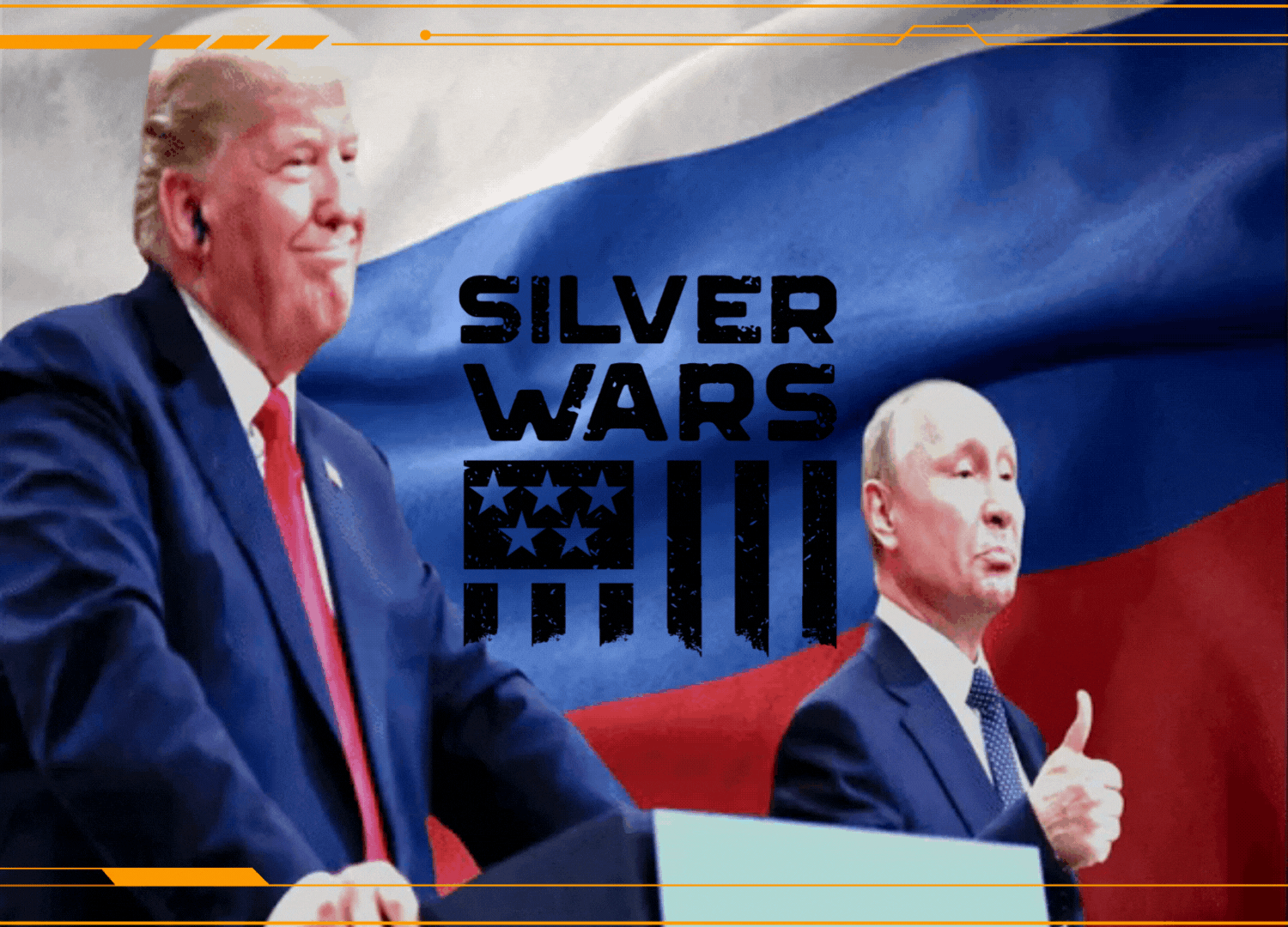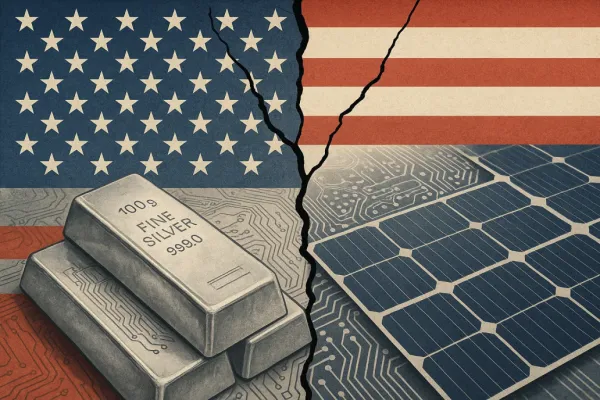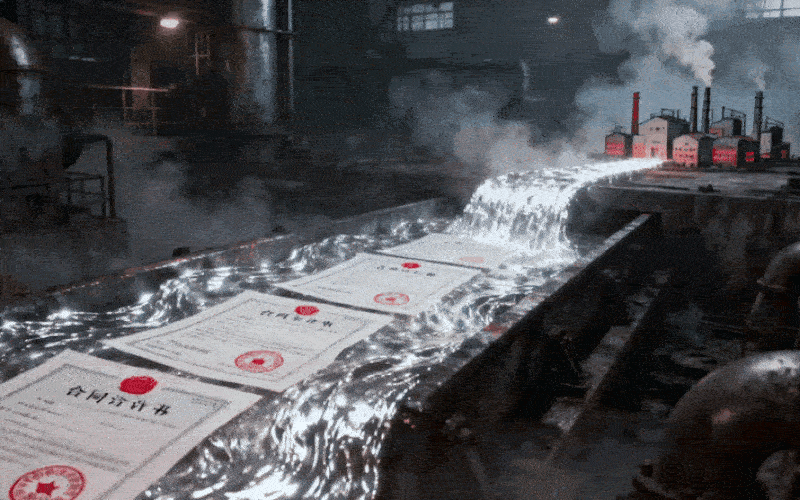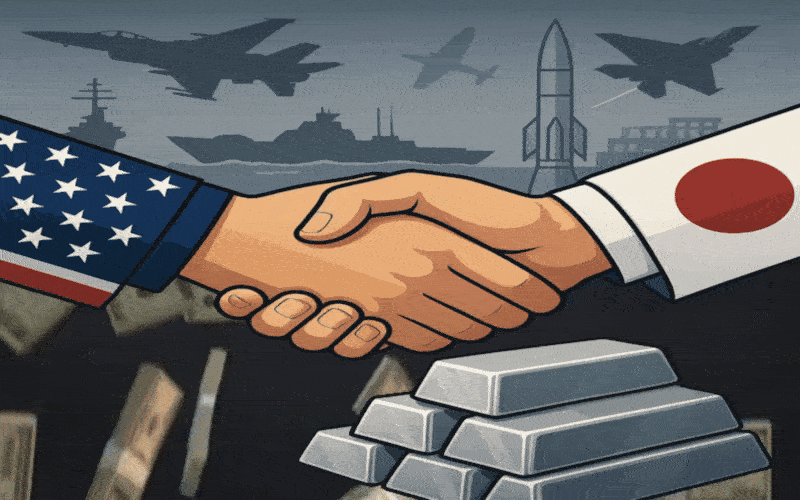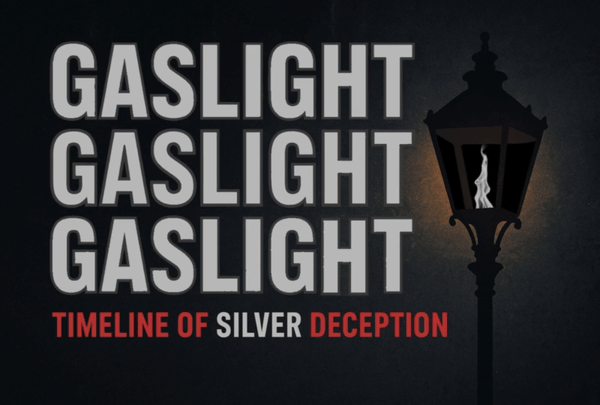Multiple outlets report that a "minerals-for-peace" idea is circulating around the Alaska summit between President Trump and President Putin. The Telegraph said the US was preparing to offer Russia access to rare-earth and other mineral resources to entice a Ukraine ceasefire; Mining.com relayed that reporting.
Some speculation went further, suggesting Alaskan resources could be on the table. Alaska's governor, Mike Dunleavy, publicly denied it after speaking with the President, and fact-checkers flagged the Alaska angle as unproven rumor.
Even so, the direction of travel is clear: minerals– where they are, who controls them, and who can move them– are now at the heart of the Ukraine talks. The Times has also reported discussions about territorial swaps and economic access to resources in Russia-occupied areas as part of a potential package.
WHY SILVER MATTERS TO NATIONAL SECURITY
Silver is not just jewelry. It is the quiet backbone of modern defense platforms:
1.) Power & Propulsion: The US military has long used silver-zinc batteries in submarines, torpedoes, deep-sea vehicles, drones, buoys and space systems because of their unmatched energy density and reliability. NASA notes "the military still deploys these" battery chemistries.
2.) Cables & Avionics: Standard aerospace/defense wiring specs (e.g., M22759) call for silver-plated copper conductors to carry high currents at high temperature with low resistance– think fighters, drones, missiles, and shipboard systems. Connectors for harsh environments (MIL-DTL-38999 families) routinely use silver-plated contacts for low contact resistance.
3.) Electronics & Sensors: USGS lists electrical/electronic uses as a top share of US silver demand– guidance, communications, radar, satellites, and hardened computing all benefit from silver's top-tier conductivity and reliability.
Looking to diversify your portfolio with tangible assets? Jim Cook at Investment Rarities offers expertly curated asset investments with their extremely dedicated team. Discover unique opportunities often overlooked by traditional markets. Visit InvestmentRarities.com Today!
History reminds us how strategic silver can be: During WW2, the War Department stole ~14,700 tons of Treasury silver to wind the Y-12 calutron magnets for the Manhattan Project. DOE and historical records document the scale of that endeavor and the silver's eventual return many decades later.
Today, the US is still net-import reliant on silver (about 64% in 2024), and Alaska is the leading silver-producing state. Those two facts alone make any talk of handing Russia commercial access to US mineral basins--especially Alaskan ones--strategically reckless.
WHERE THE SILVER (AND OTHER CRITICAL MINERALS) ARE IN UKRAINE
Ukraine is a critical-mineral power in Europe. Mapping and analyses show significant deposits of lithium, rare earths, titanium, graphite, uranium and more– many located in areas Russia occupies or contests.
As for silver specifically: classic geologic references for the Donbas (Donets Basin) note lead-zinc ores with an admixture of silver and gold near Sloviansk, Bakhmut and the Naholnyi Ridge– historically known occurrences, even if under-developed. That is, Donbas is not just coal and gas; it also hosts polymetallic systems where silver accompanies base metals.
Kyiv, for the its part, has formal lists of "strategic" and "critical" minerals and is moving to auction or PSA key deposits (for example, graphite and lithium). Whether or not silver sits on the current short list, the defense importance is obvious given its roles above. The key point: Ukraine has created a legal pathway to develop these resources under Western alignment– not Russia exploitation.

In 2021, Ukraine did list silver of strategic important for the sustainable developments of their economy and defense capability.
RUSSIA'S RESOURCE POSITION– AND WHY DONBAS MATTERS
USGS's 2025 summary places Russia's silver reserves at ~92,000 metric tons, among the largest globally. Adding Ukrainian polymetallic districts to Russian control– even indirectly via "access" rights– would tighten Moscow's grip on a metal the US relies on importing from foreign sources.

Independent analyses estimate that, within months of the 2022 invasion, Russia controlled a large share of Ukraine's mineral wealth, and many of Ukraine's critical-mineral deposits lie in the east and south– precisely where Russia has focused occupation. Any settlement that legitimizes Russia extraction would lock in that advantage and normalize the redirection of these resources to Russia's military-industrial base.
The Research we do is made possible by our sponsor Investment Rarities and Public Donations. Thank You For Your Support!
THE ARCTIC ANGLE: RESOURCES & LOGISTICS
As the Arctic opens, the Northern Sea Route can be roughly 40% shorter for Asia-Europe shipping than Suez routes, reshaping bulk-commodity flows– like metals– and enabling faster military resupply. Russia has invested for years in Arctic basing and fleets to control the corridor. If it also secures more silver and rare-metal feedstocks, it improves both input security and output logistics for weapon production.

US policy is clearly shifting to harden critical-minerals supply chains (e.g. Pentagon investment in domestic rare-earth mining and magnets). That logic must extend to silver: a dual-use metal foundational to defense electronics.

BOTTOM LINE
- Do not trade mineral rights for headlines: Even floating US or Ukrainian mineral concessions to Russia signals strategic weakness and directly aids an adversary's defense base. Alaska rumors were denied, but the very idea is corrosive policy.
- Protect Ukrainian subsoil sovereignty. Any peace framework should bar Russian extraction or off-take rights in occupied areas and condition relief on withdrawal and verifiable demilitarization. Mapping shows many critical deposits lie where Russia wants to stay.
- Harden US silver supply chains. Expand responsible US mining and refining (with Alaskan leadership), increase strategic inventories under the National Defense Stockpile authorities, and prioritize silver alongside headline "critical" minerals.
- Arctic posture matters. Cement allied control of choke points and infrastructure so that bulk defense metals– including silver– can move securely on Western terms.


